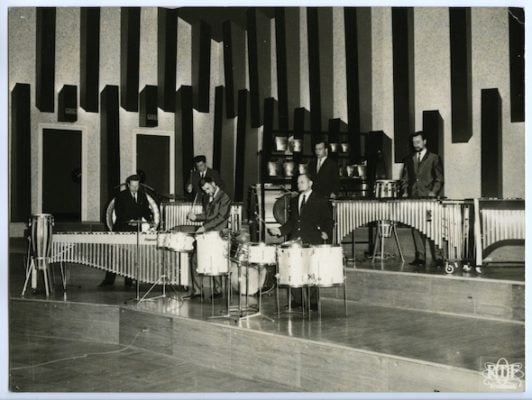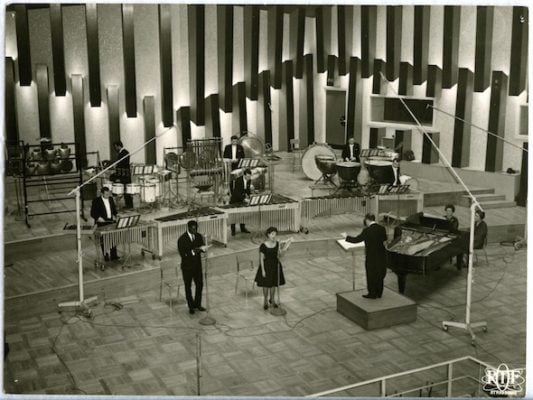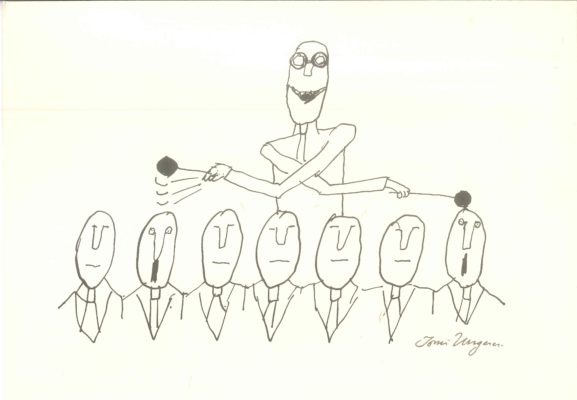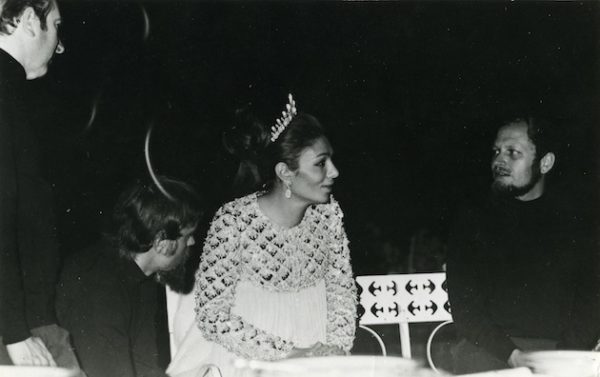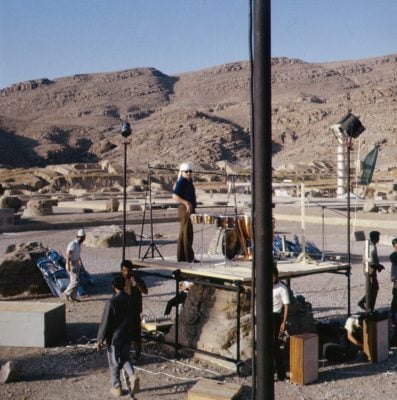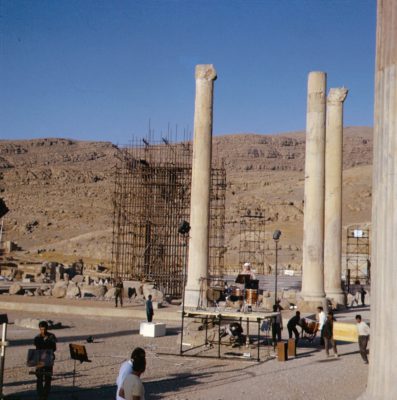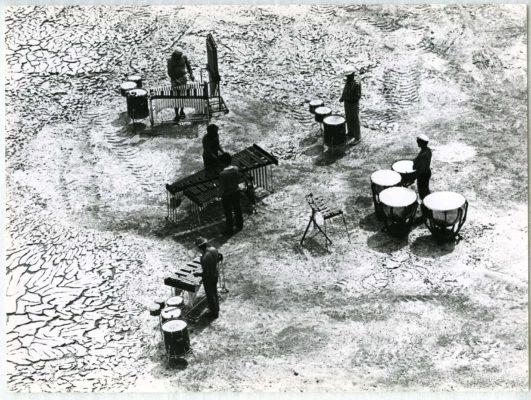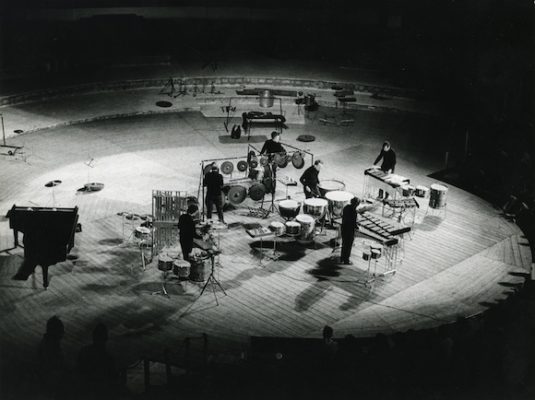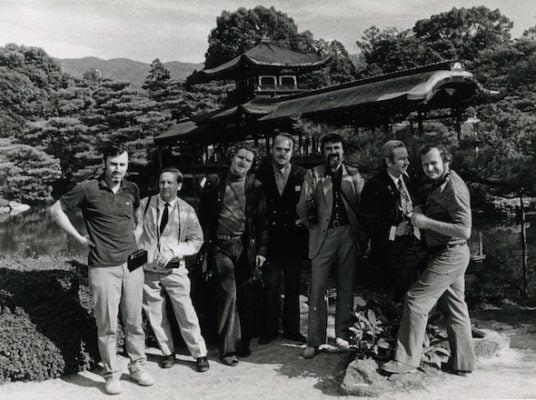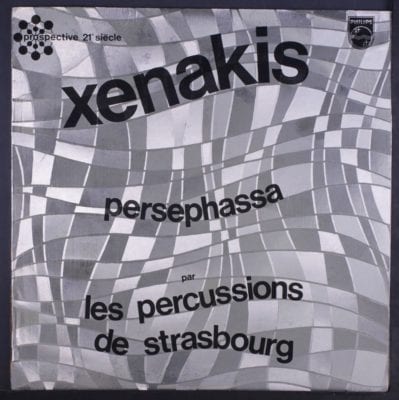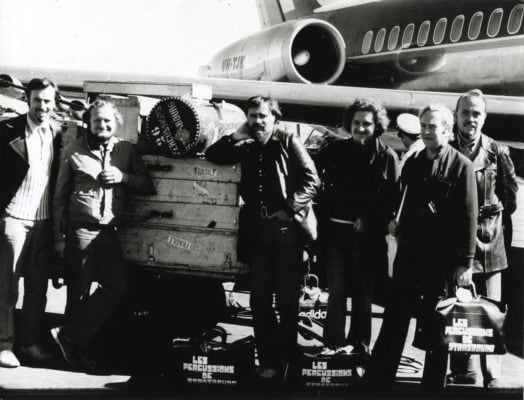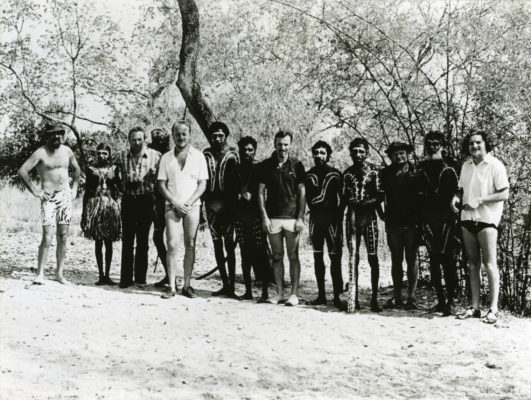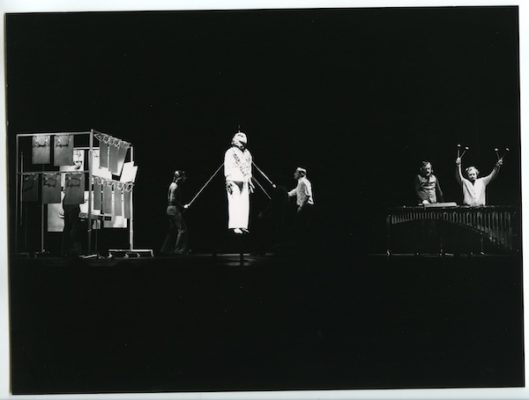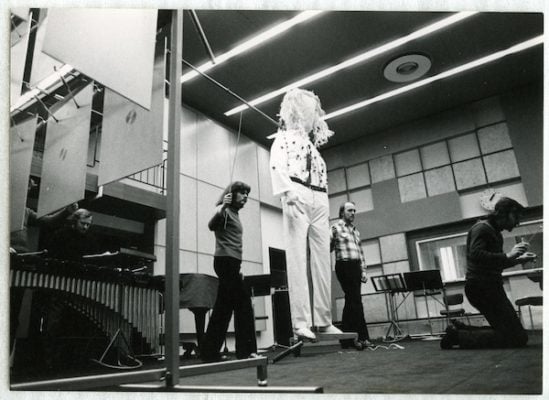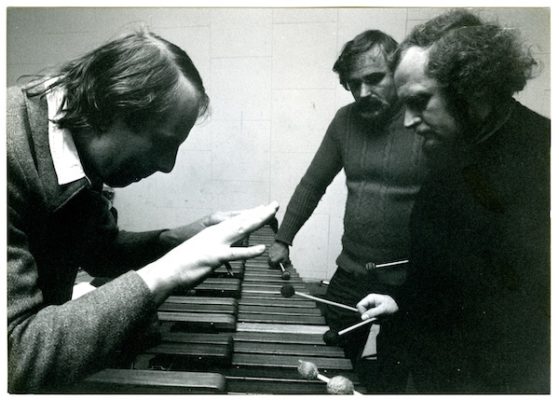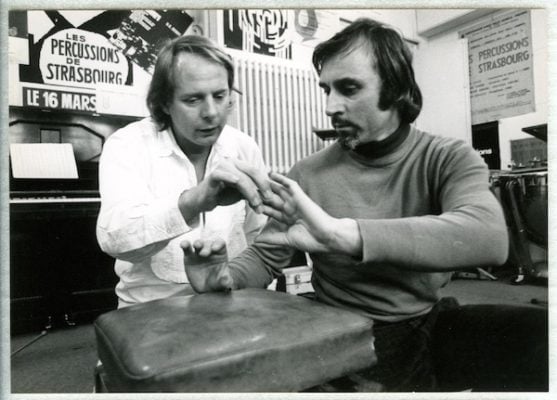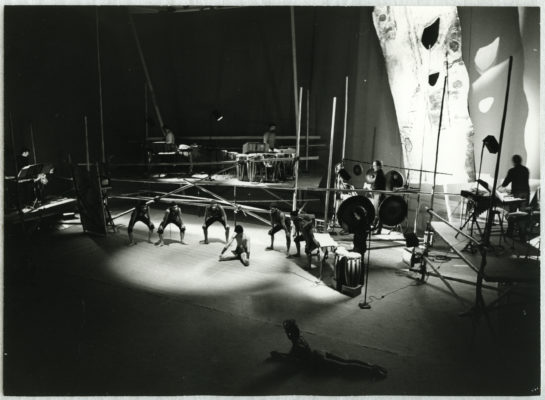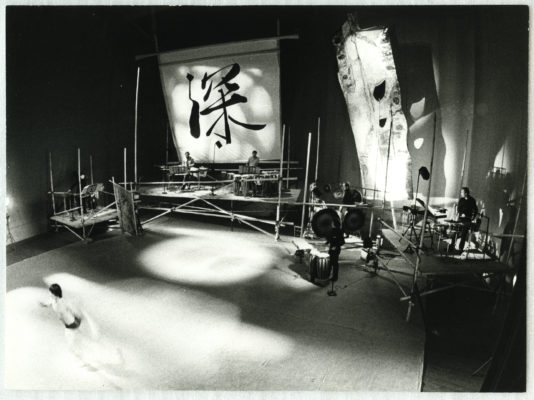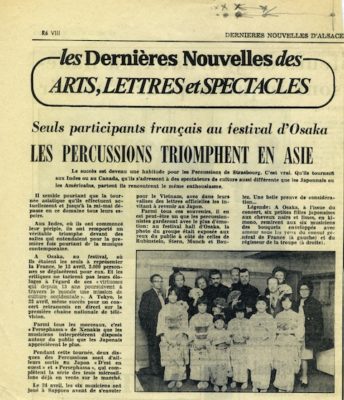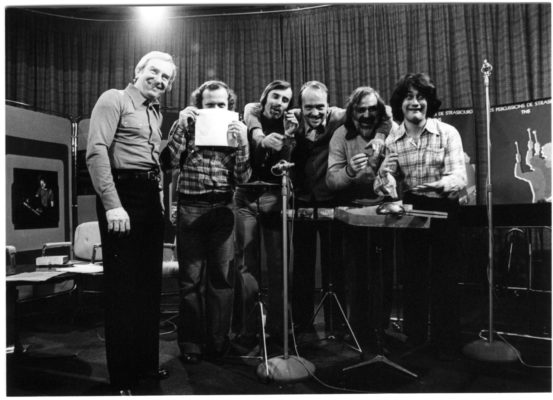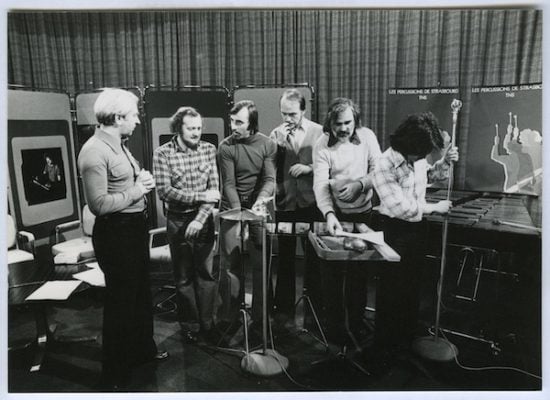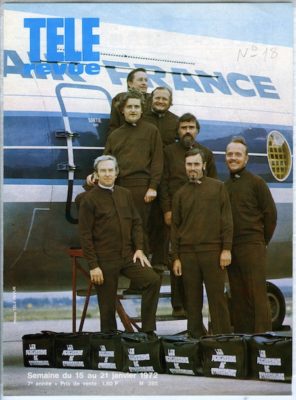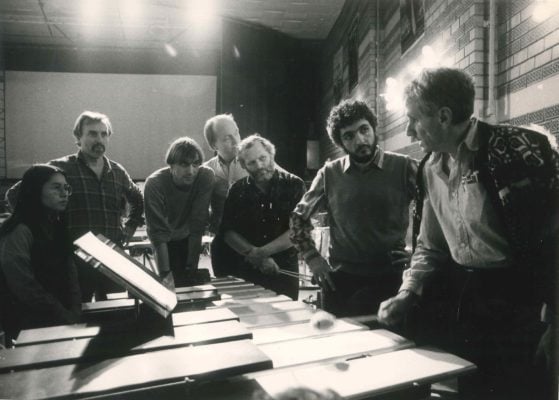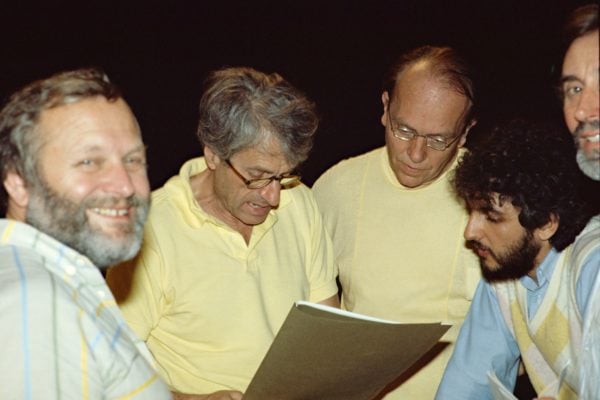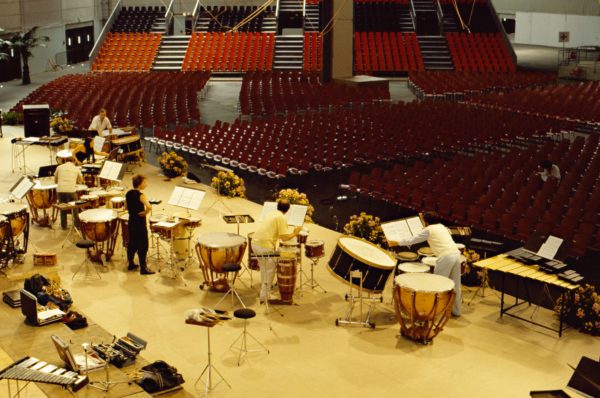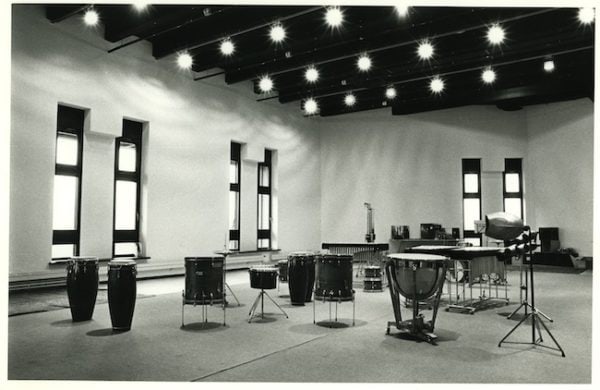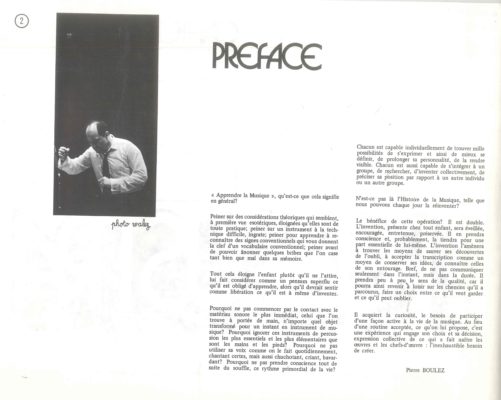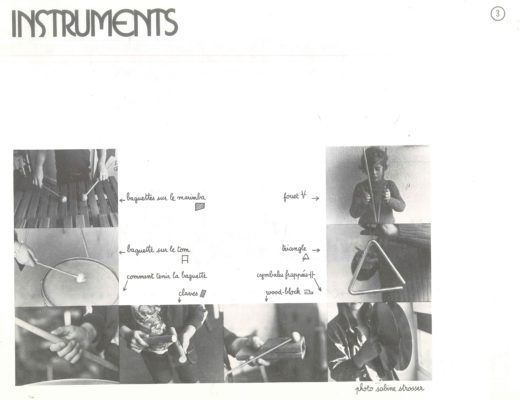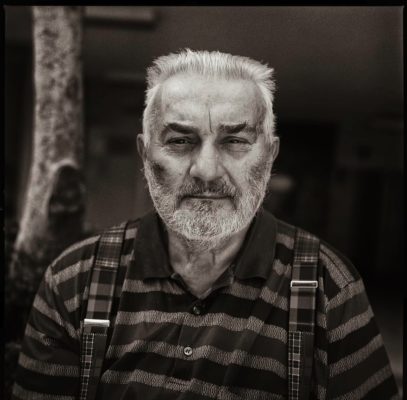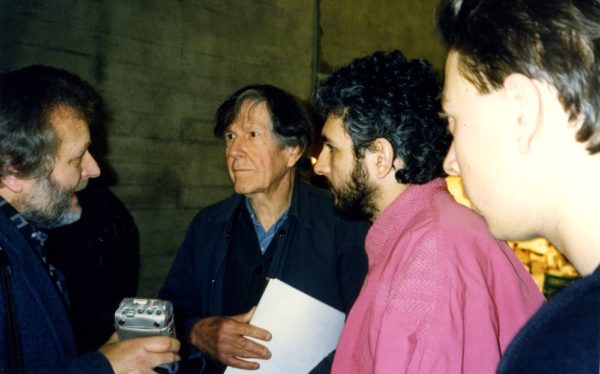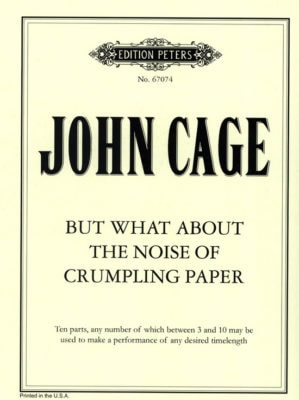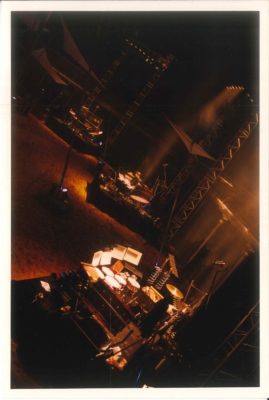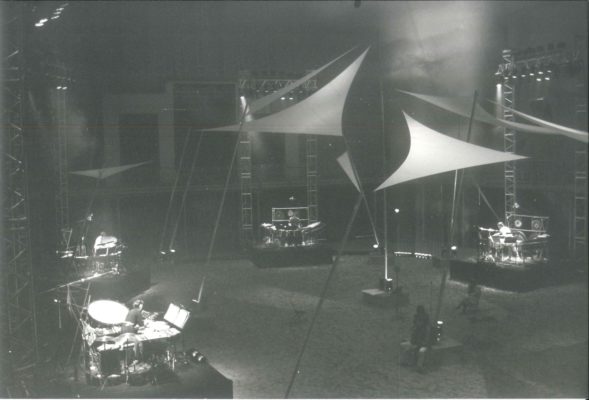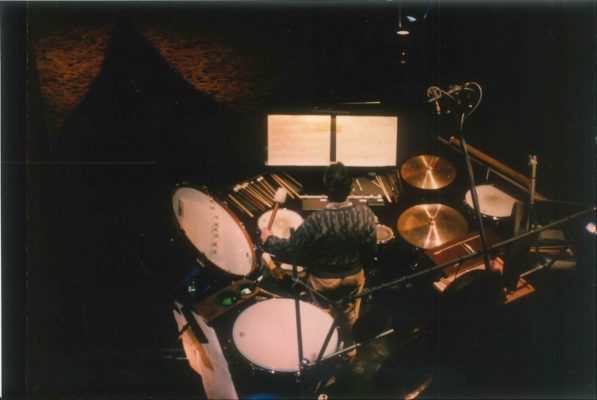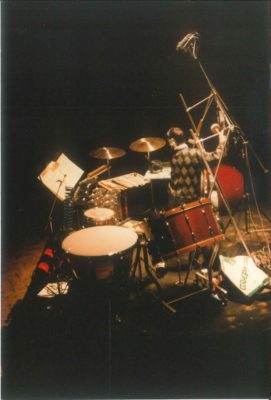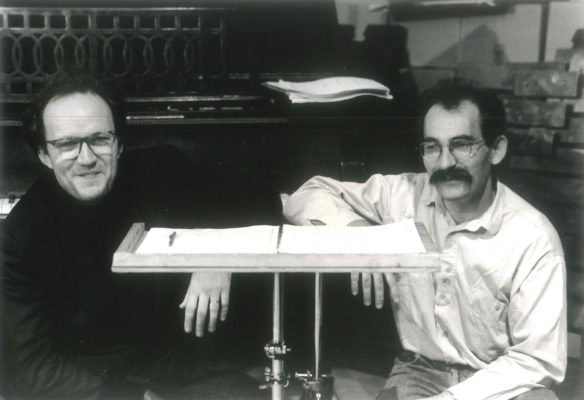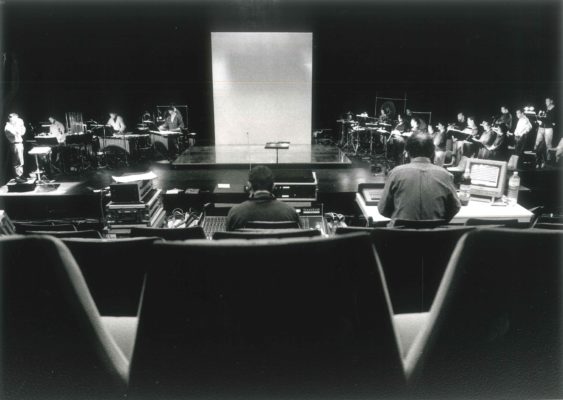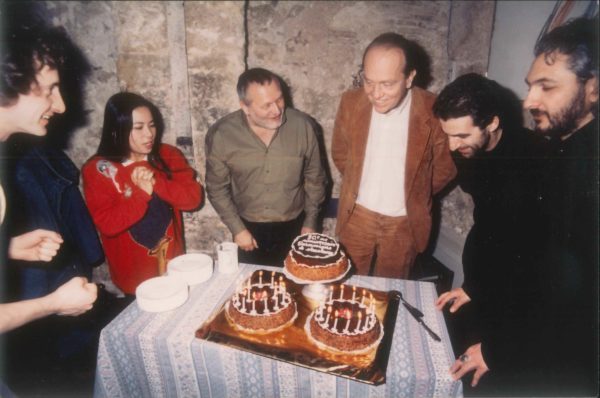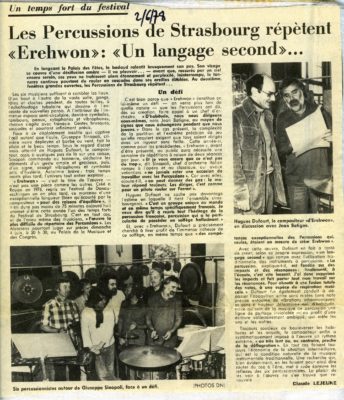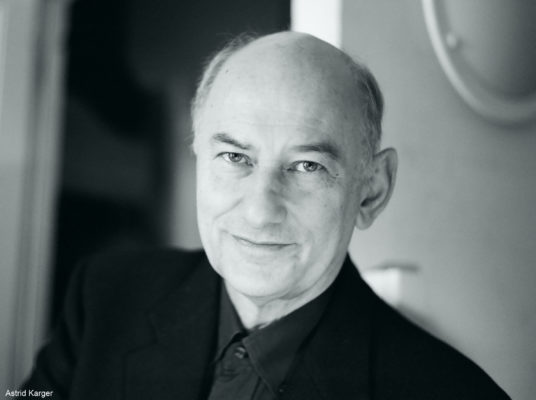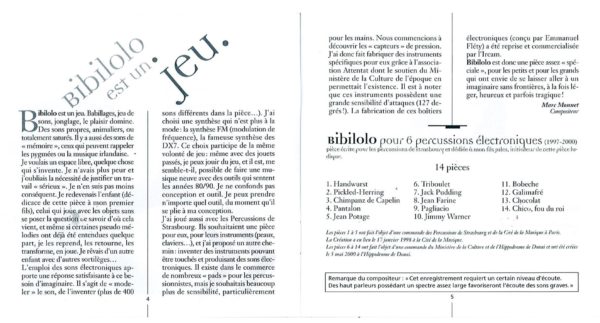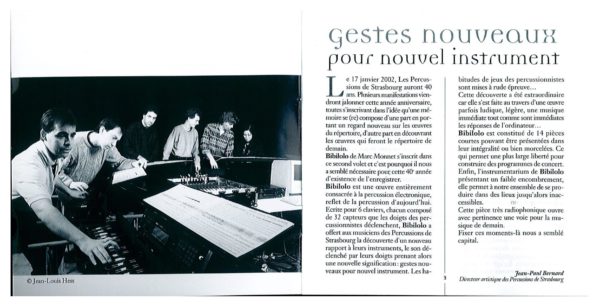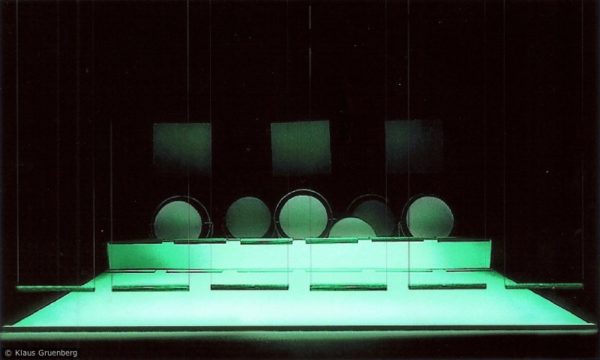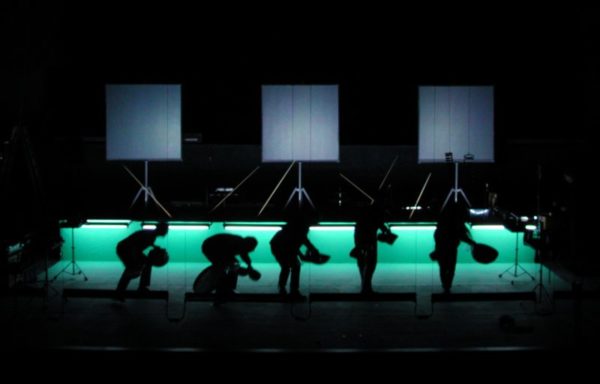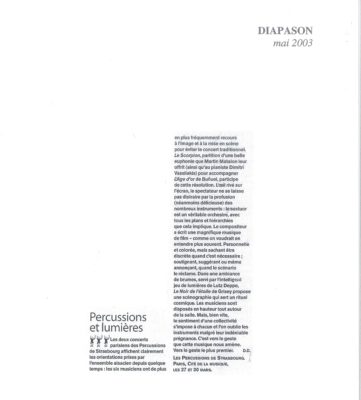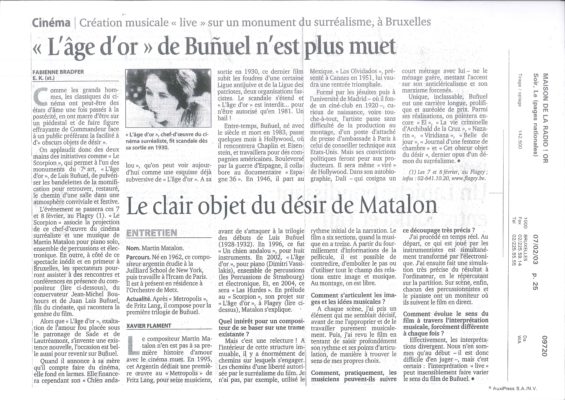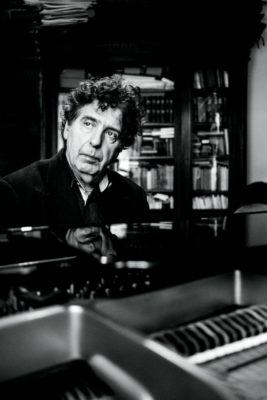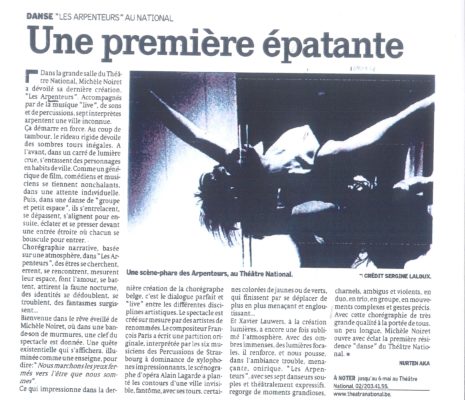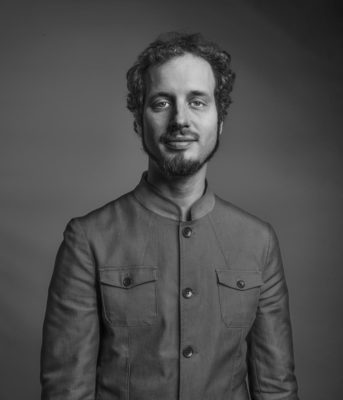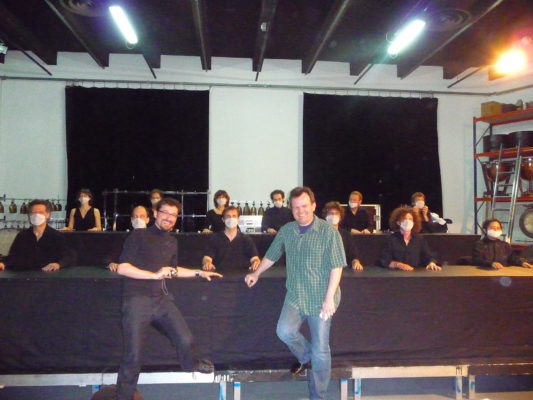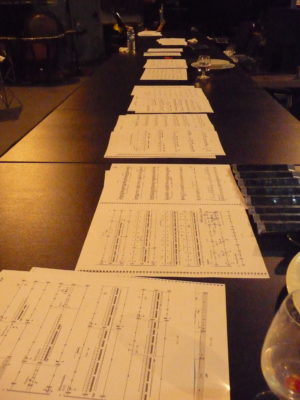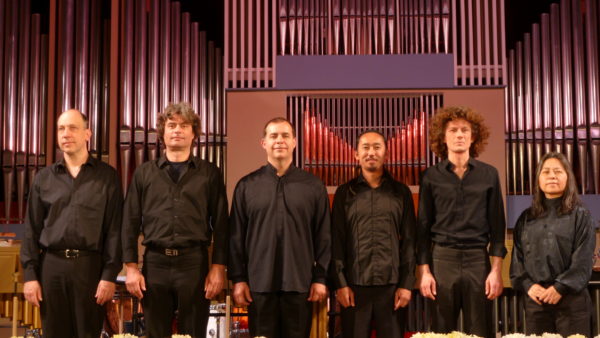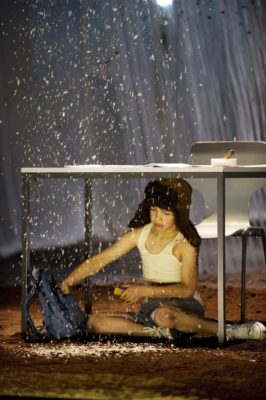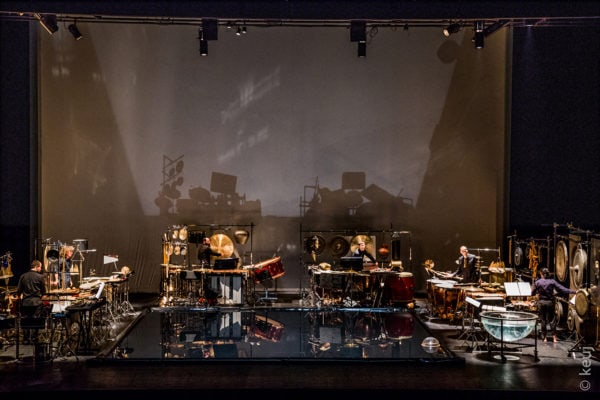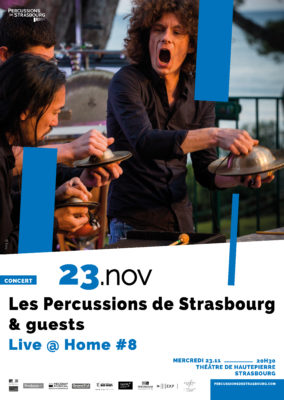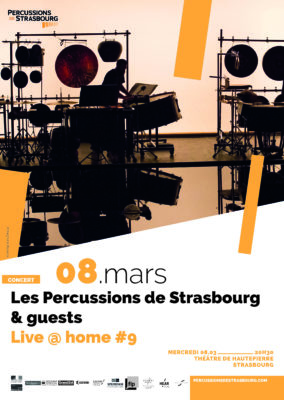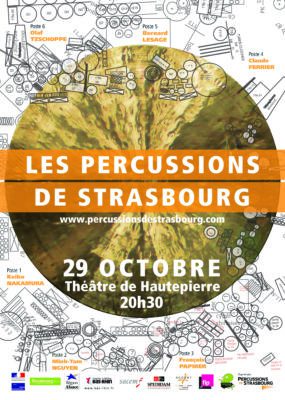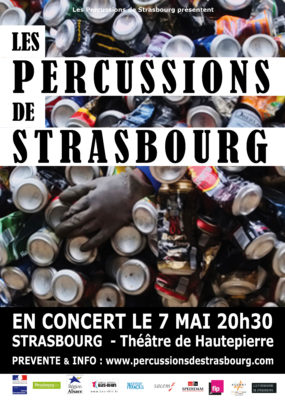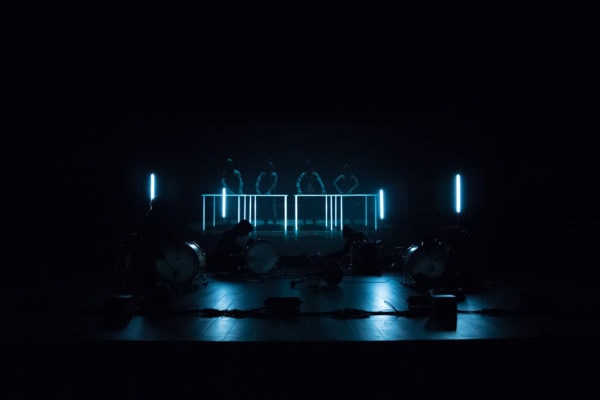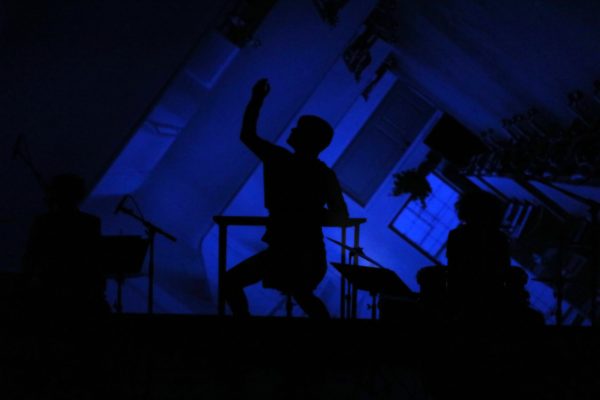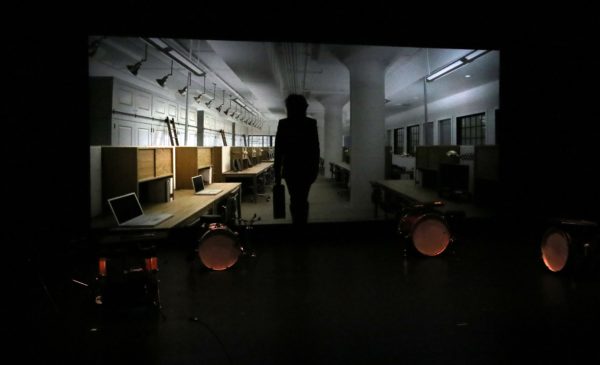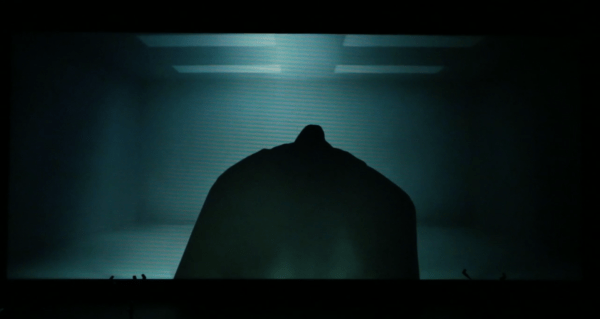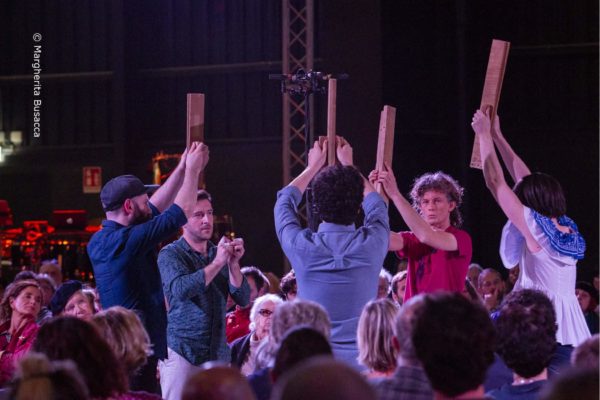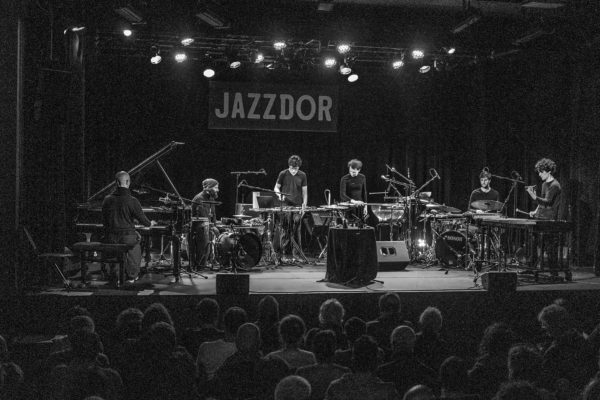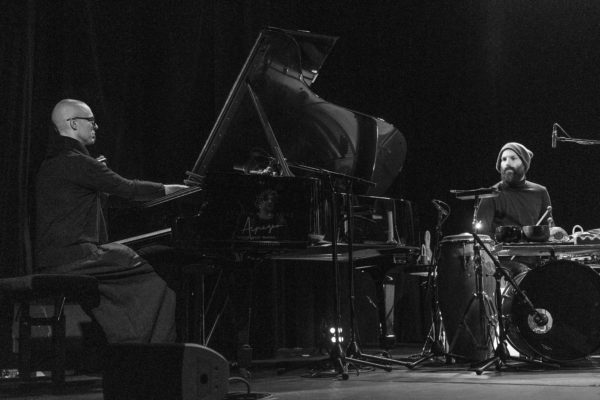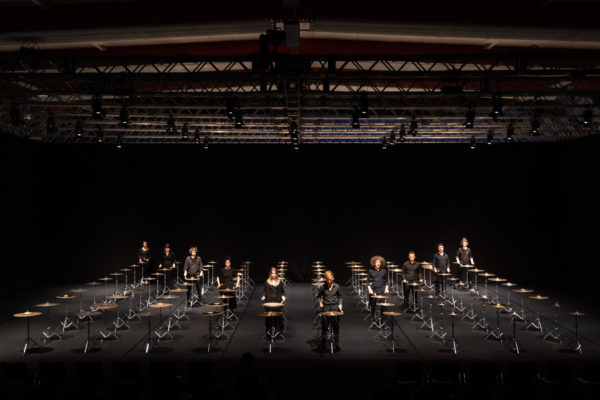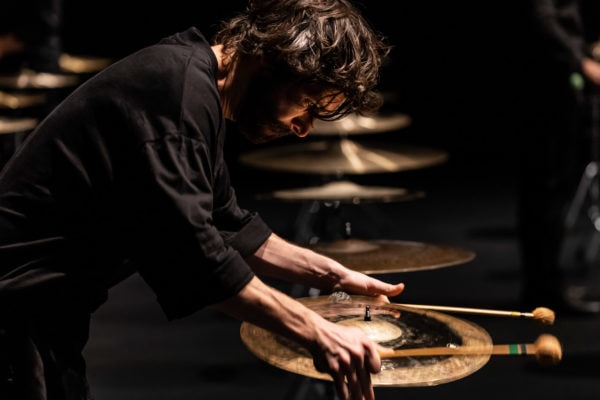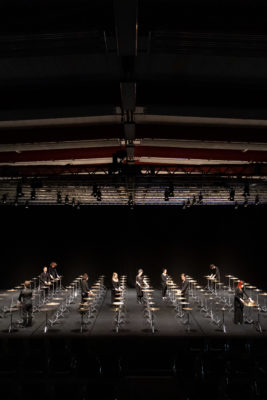60 years of history
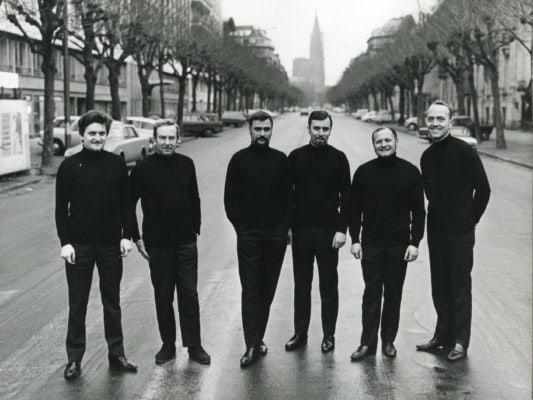
1962
1972
1957
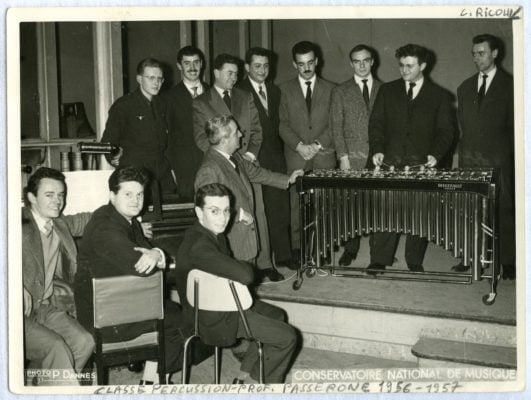
Felix Passerone’s percussion class at the Conservatoire de Paris
Photograph of the class of 1956-57 of Felix Passerone’s percussion class (which was created in 1947), with Claude Ricou in the top right hand corner of the picture ©P. Dannès
1960
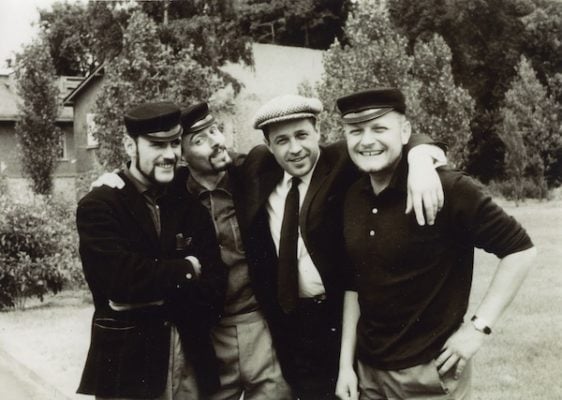
Jean Batigne proposes to form a band during a rehearsal of Pierre Boulez’s « Visage Nuptial » to the other percussionists
Photograph from the beginnings of the artistic and friendly collaboration between Pierre Boulez and the others. From left to right: Jean Batigne, Claude Ricou, Pierre Boulez, Georges Van Gucht. This photograph is nicknamed « Les casquettes » (The Caps) and was taken in Darmstadt on July 15th, 1962 after a performance of « le Marteau sans maître » (1954) by Pierre Boulez.
©DR
1961
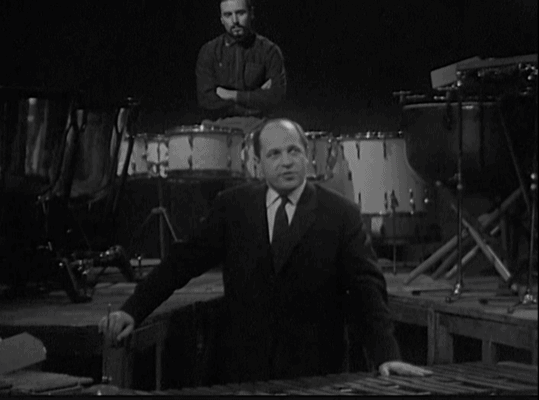
The early days of the Instrumental Percussion Group of Strasbourg
Pierre Boulez evokes the collaboration of the Percussions de Strasbourg on the radio programme « Cool blues et percussion ». first broadcast on January 16th, 1963. Produced by RTF, Paris. ©INA
1962
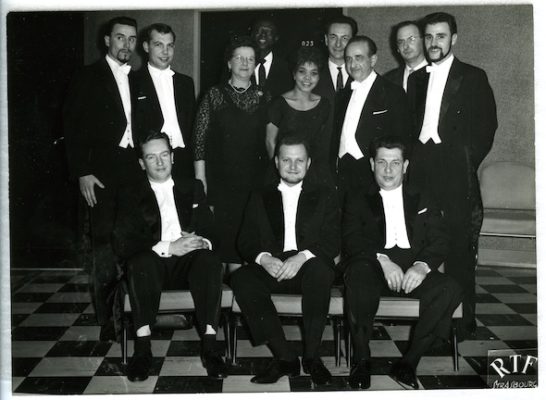
Inaugural concert: January 17th, 1962 in Strasbourg
On January 17th, 1962, at the auditorium of the Maison de la Radio in Strasbourg. The very first concert of the Percussions de Strasbourg, directed by Charles Bruck. On the picture, sitting in the first row, from left to right:
Jean-Paul Finkbeiner, Georges Van Gucht and Lucien Droller.
Standing; from left to right: Claude Rico, Bernard Valet, Yvonne Loriot, Toto Bissainthe, Charles Bruck and Jean Batigne. Standing, in the back: Bachir Touré and two other people.
1963
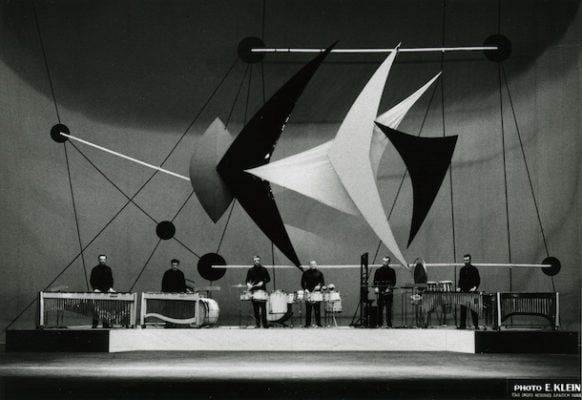
First creations: Maurice Ohana, « 4 études chorégraphiques »
Maurice Ohana’s ballet « 4 études chorégraphiques », whose premiere was choreographed at the Strasbourg Festival on June 8th, 1963 by the Percussions de Strasbourg and choreographer Manuel Parrès. From left to right, we can see: Jean-Paul Finkbeiner, Lucien Droller, Jean Batigne, Georges Van Gucht, Bernard Balet and Claude Ricou. Photograph by © E. Klein
1965
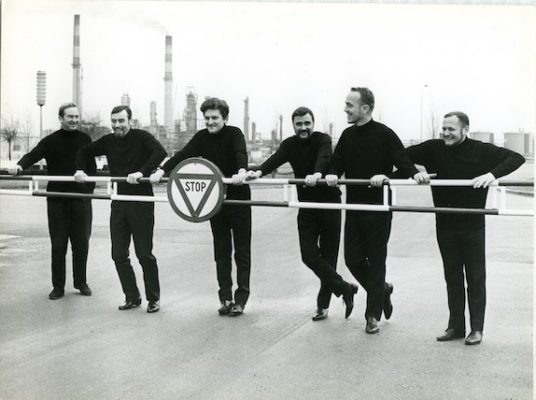
First international tours: The Netherlands, Croatia, Poland, Spain…
In front of the Reichstett refinery, in Alsace. From left to right: Jean-Paul Finkbeiner, Claude Ricou, Detlef Kieffer, Jean Batigne, Gabriel Bouchet, Georges Van Gucht. Photograph by © Jacques Aubert
1967
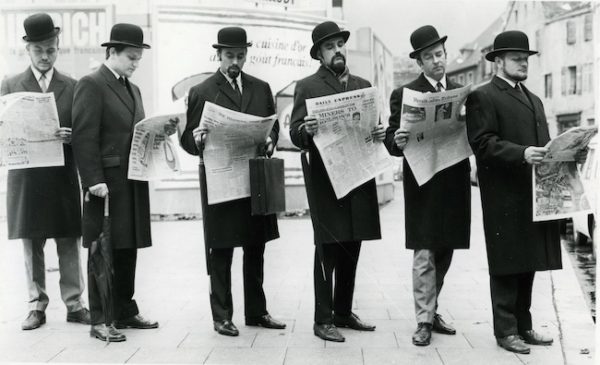
Increasing renown for the group
October 1967, from left to right: Gabriel Bouchet, Detlef Kieffer, Claude Ricou, Jean Batigne, Jean-Paul Finkbeiner, Georges Van Gucht.
1968
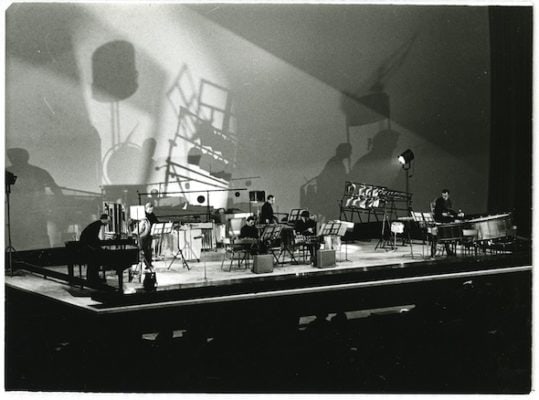
The creation of Edgar Varèse’s « Ionisation » in Paris: a major piece for this first generation
Concert in Paris, on February 28th, 1968. The band plays « Ionisation » by Edgar Varèse at the Paris Law School, rue d’Assas. Among the game of shadows, we can see, from left to right: Gabriel Bouchet, Jean-Paul Finkbeiner, Jean Batigne, Georges Van Gucht, Detlef Kieffer, and finally, Claude Ricou. Photograph by © Jacques Aubert
1969
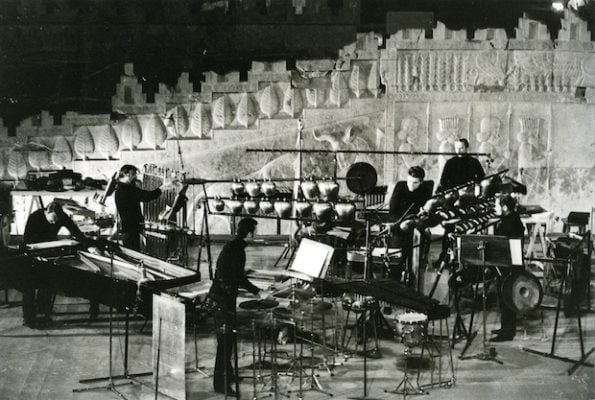
The creation of Iannis Xenakis’ « Persephassa » at the Chiraz-Persepolis Art Festival
The Percussions de Strasbourg, September 1969. Chiraz-Persepolis Art Festival, Iran. The programme included: “First Construction in metal » by John Cage and « Ionisation » by Edgar Varèse. The festival was also here to see the birth of Iannis Xenakis’ piece « Persephassa » on September 9th, 1969.
Iannis Xenakis’ « Persephassa » was created at this occasion. There are only a few archives left of this piece, for its ring-like disposition around the audience made it difficult for people to record it or take pictures of it. When it was created in Persepolis, each percussionist was settled on the stump of a column of the Palace of Darius. The distance between them could go as far as 164 feet (50 metres).
1970
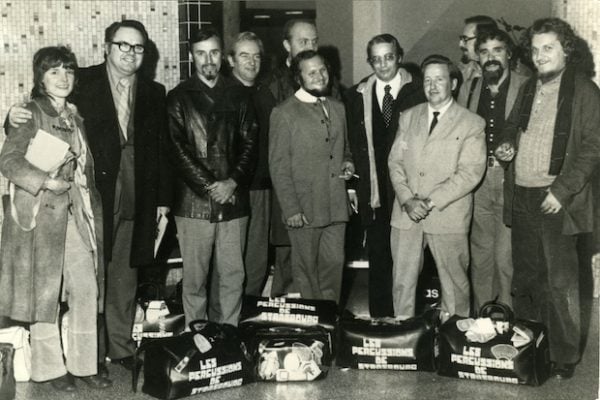
The Percussions de Strasbourg play on different continents
With the Percussions de Strasbourg bags at their feet: Claude Ricou, Jean-Paul Finkbeiner, Gabriel Bouchet, Georges Van Gucht and Detlef Kieffer on their departure for the North American and Mexican tour of 1969.
1971
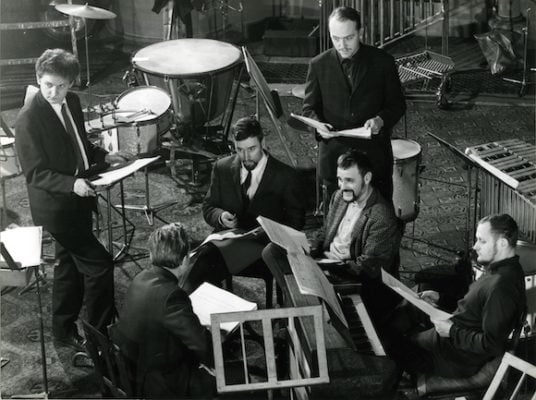
The Percussions de Strasbourg travel across the world and record Iannis Xenakis’ « Persephassa »
A picture of the band discussing around the sheet music. From left to right: Detlef Kieffer, Jean-Paul Finkbeiner (turning his back), Claude Ricou, Gabriel Bouchet (standing), Jean Batigne and Georges Van Gucht. Recording of Xenakis’ « Persephassa » (1969) in St Paul’s Church, Strasbourg, on January 21-23 1971. ©DR
From the 21st to the 23rd of January, the Percussions de Strasbourg recorded « « Persephassa ».
In August, they left France to go on a world tour.
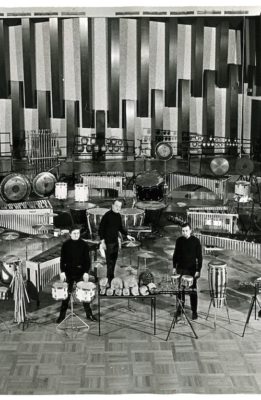
1972
1982
1972
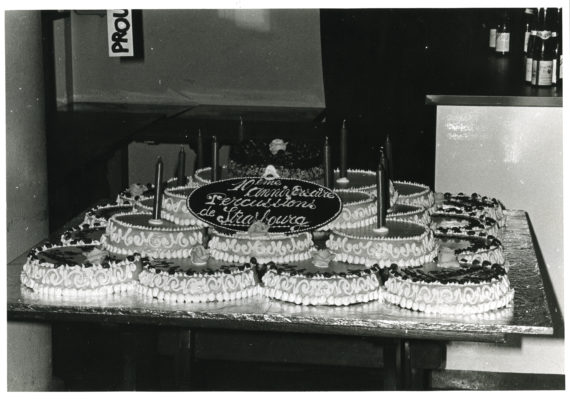
The Percussions de Strasbourg celebrate their 10th anniversary and create « Kryptogramma » by Georges Aphergis
The Percussions de Strasbourg’s 10th anniversary party © Archives.
1975
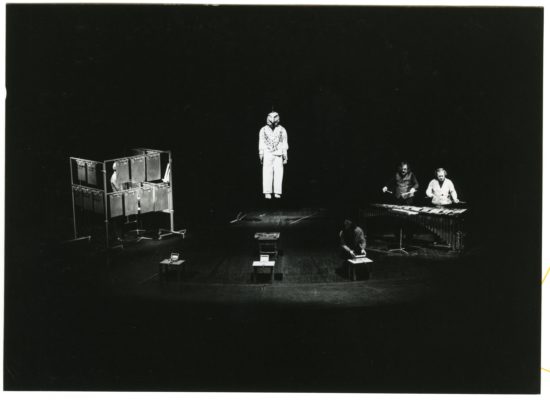
A year filled with creations with, among others, works by Stockhausen and Taira
Creation of « Musik im Bauch » with Stockhausen. The piece was shown in 1975 at the Royal Festival.
Yoshihisa Taira’s piece « Hierophonie V » is also a major « hit » from the band. It was created in 1975 at the Royal Festival and was played on multiple occasions by all generations of the Percussions de Strasbourg. You can find a version of this piece with Eddy Ekete in 2014, on our Youtube channel, by clicking here.
1975
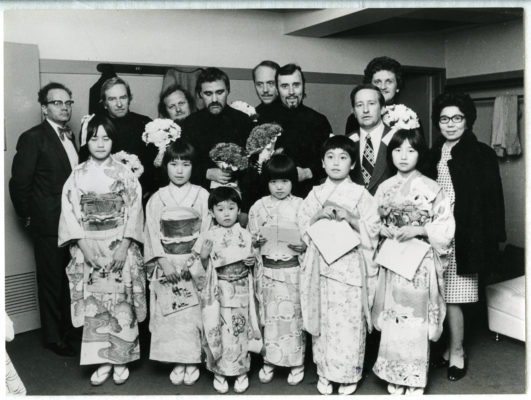
Asian Tour : all eyes on the Osaka International Festival
On April 13th, 1975 in Osaka (Japan), with France’s Consulate General. Asian tour. Programme: Miloslav Kabelac’s « Huit inventions » (1965), Kazimierz Serocki’s « Continuum » (1966) and Iannis Xenakis’ « Persephassa » (1969).
1977
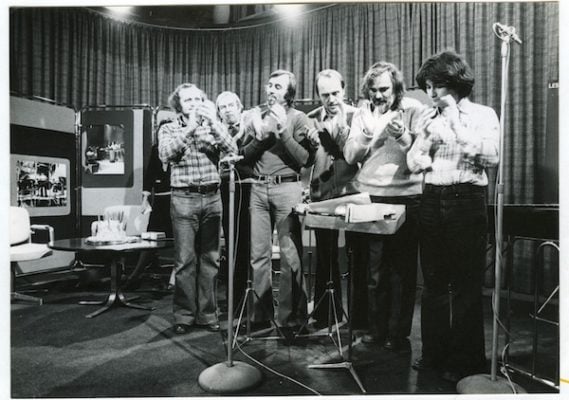
American and Canadian Tour
The Percussions de Strasbourg at the TNS (National Theatre of Strasbourg) in February 1977. With: Jean-Paul Finkbeiner, Georges Van Gucht, Claude Ricou, Gabriel Bouchet, Jean Batigne, and Olivier Dejours. Programme: Steve Reich’s « Clapping » (1972).
1978
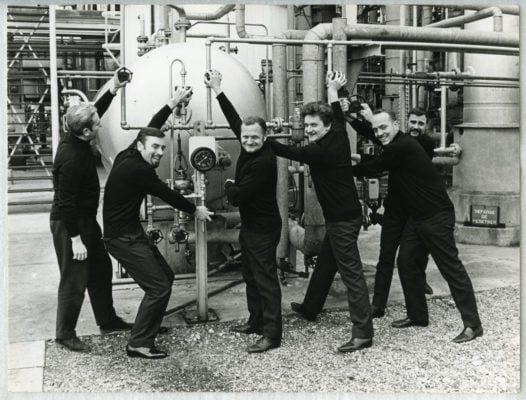
Asian Tour
From left to right: Jean-Paul Finkbeiner, Claude Ricou, Georges Van Gucht, Detlef Kiefer, Gabriel Bouchet and Jean Batigne in the back.
1979
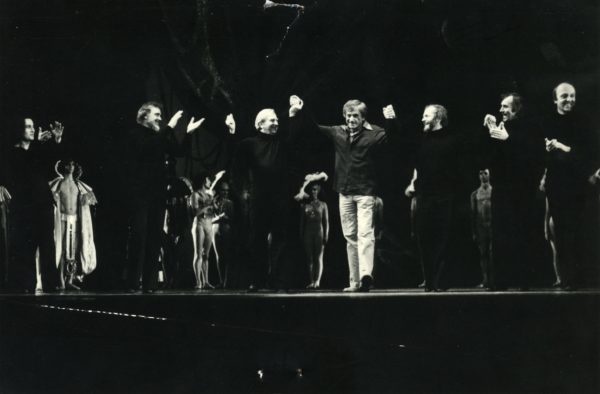
Iannis Xenakis’ « Pléiades », an iconic piece for the band
Creation of « Pléiades » with Iannis Xenakis and the Ballet du Rhin in Mulhouse in April 1979. Final bow, with, from left ro right: Olivier Dejours, Jean Batigne, Jean-Paul Finkbeiner, Iannis Xenakis, Georges Van Gucht, Claude Ricou and Gabriel Bouchet.
Being a major piece from the Percussions de Strasbourg, « Pléiades » will be played by each generation of musicians.
1980
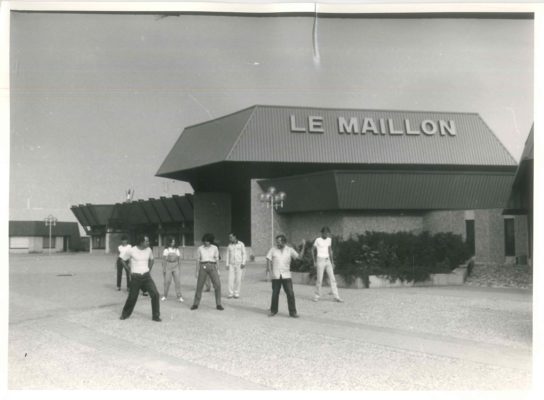
The inauguration of the Percussions de Strasbourg’s premises
A picture of the premises in the 80s, whose inauguration took place on November 12th, 1980. The musicians from the Percussions de Strasbourg are in the middle of their Qi-qong class.
© Archives Percussions de Strasbourg
1981
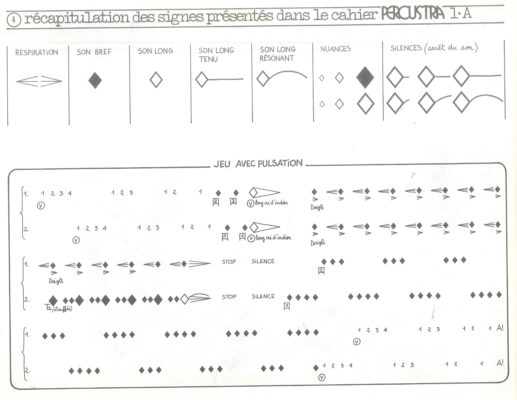
The opening of the percussion school and new opportunities to spread the Percustra method
Illustrations; excerpt from the Cahier Percustra 2A, 1975, by Alphonse LEDUC and Co.
The Percustra teaching method was invented and developed by the founding members of the Percussions de Strasbourg, with the help of Pierre Boulez, in the early 70s. It was then spread across the whole world. With a collective educational approach that aims to stand apart from academic schemes, the Percustra method stimulates everyone’s creative potential. Whether they be professionals or amateurs, children and adults thus discover a music that expresses itself through every media, where creative freedom – in gestures and in sound – triumphs over academic constraint. Percustra is a collective and active approach of music. Notions of perception are put into perspective — notions such as listening, breathing or the pulse. Percustra feeds on the participants’ composition: any personal idea from a student can fit in the collective piece. The teacher (a musician from the band) rewrites or adapts the score all throughout the workshop.
If you want to learn more about Percustra and the actions of mediation of the band, click here .
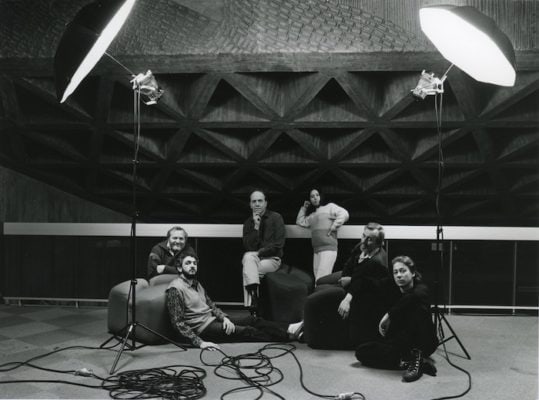
1982
1992
1982
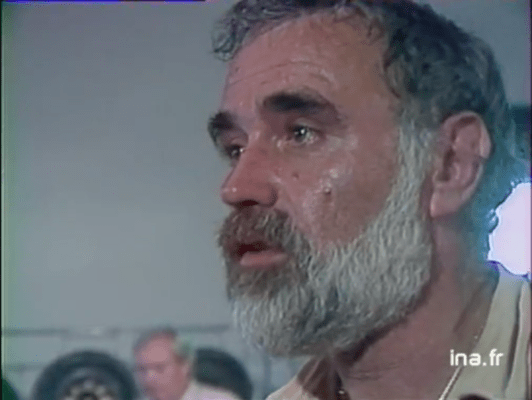
The band is 20 years old
National news broadcast of the evening (TF1 20h), « Percussions de Strasbourg ». Produced by Boulogne Billancourt. Télévision Française 1 (TF1), 1982. © INA
1983
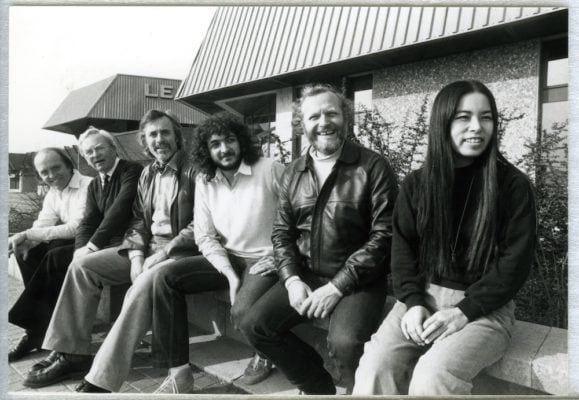
In front of the Théâtre de Hautepierre, with the two new members who arrived that year: Christian Hamouy and Keiko Nakamura
From front to back: Keiko Nakamura, Georges Van Gucht, Christian Hamouy, Claude Ricou, Jean-Paul Finkbeiner and Gabriel Bouchet (1983). © Archives Percussions de Strasbourg
This decade saw changes in the team of the Percussions de Strasbourg. While some original members stepped aside, new musicians arrived to stay as permanent members: Christian Hamouy, Keiko Nakamura and Jean-Pierre Bédoyan. Others also join the team as teachers or occasional members. That is the case for Jean-Michel Collet, Pierre Moerlen, Pierre Gasquet, Jean Couturier and Norbert Jensen.
1984
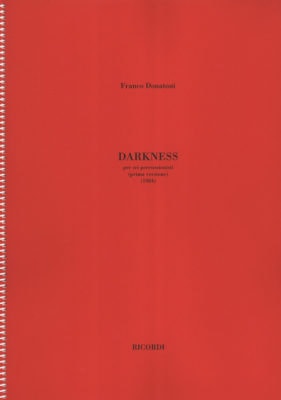
The creation of « Darkness » by Franco Donatoni
A picture of the score for « Darkness », first version, 1984, Ricordi editions.
1985
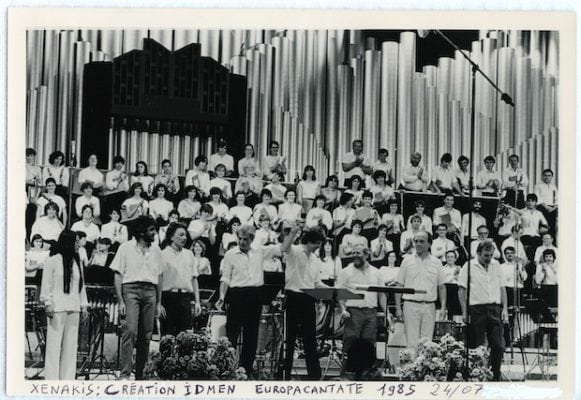
The creation of Iannis Xenakis’ « Idmen »
« Idmen », a creation by Iannis Xenakis for the Cluj Antifona choir, on July 24th, 1985. It was directed by Edmond Colombier at the occasion of the Europa Cantat Festival in Strasbourg. On the front of the stage, from left to right: Keiko Nakamura, Christian Hamouy, Jean-Pierre Bédoyan, Iannis Xenakis, Edmond Colombier, Georges Van Gucht, Gabriel Bouchet and Claude Ricou. © Archives Percussions de Strasbourg
1986
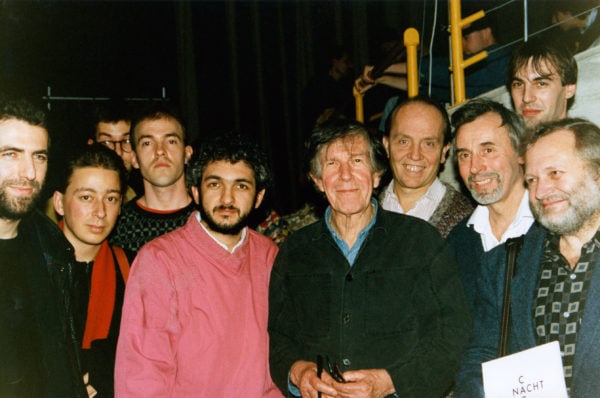
The creation of « But what about the noise of Crumpling Paper » by John Cage
A picture of the Percussions de Strasbourg with John Cage in 1987. From left to right: Jean-Paul Bernard, Jean-Pierre Bédoyan, Christian Hamouy (wearing pink), John Cage, Gabriel Bouchet, Claude Ricou, Georges Van Gucht and François Dahlman in the back. © Archives Percussions de Strasbourg
1987
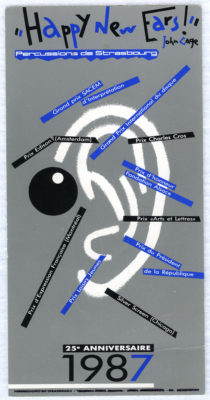
25 years for the Percussions de Strasbourg
A poster for the band’s 25th anniversary.
In September 1987, three pieces were created for the Musica Festival (Strasbourg):
- Etres Fins en mouvement by Malek Kolepent
- Clivages I by Emmanuel Nunes
- Jungle Style by Daniel Tosi
1988
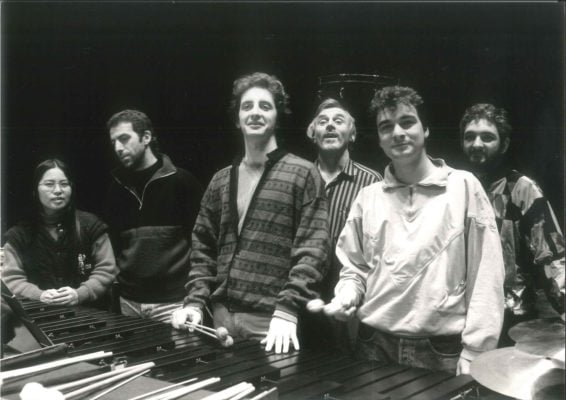
The arrival of new musicians for the band
From left to right: Keiko Nakamura, Jean-Paul Bernard, Guillaume Blaise, Claude Ricou, Vincent Vergnais, Christian Hamouy. © Archives Percussions de Strasbourg
In the late 80s, new members arrived at the Percussions de Strasbourg, thus filling the vacant spots left by Georges Van Gucht (who became Artistic Director for the band) and Gabriel Bouchet.
1991
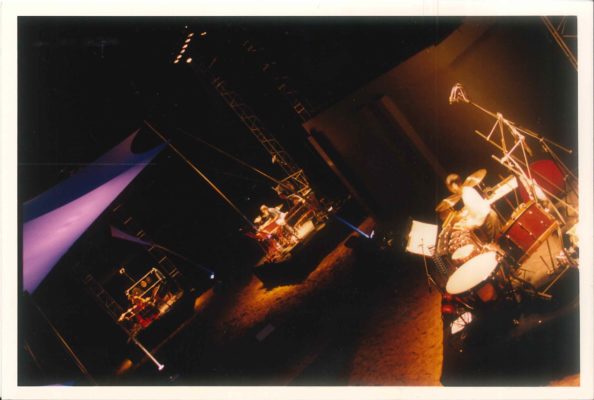
The creation of « Le Noir de l’Etoile » by Gérard Grisey
« Le Noir de l’Etoile » by Gérard Grisey was created on March 16th, 1991 at the Ars Musica Festival in Bruxelles. Six percussionists are placed around the audience. The original creation required the presence of sand on the ground — the day of the world premiere and the day of the French premiere in Strasbourg will be the only times that this happened. The logistics of putting sand on stage were way too heavy for it to be done over and over. © Archives Percussions de Strasbourg
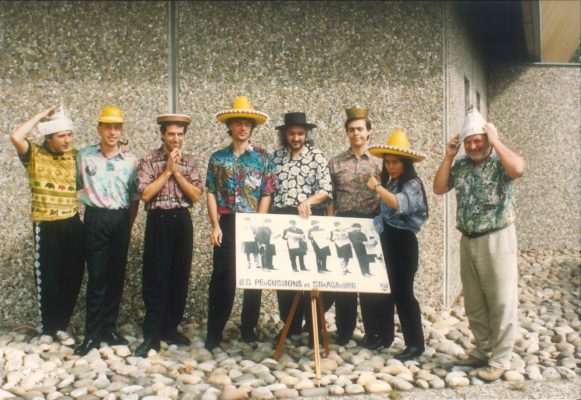
1992
2002
1992
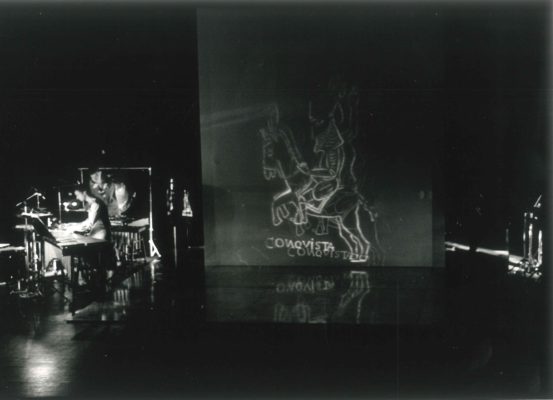
The creation of « La Célébration des Invisibles » by P.Hurel and M.Rosenmann, with Amalgame and Musicatreize, for the band’s 30th anniversary
A picture from the rehearsals of the piece © Isabelle Levy
La Célébration des Invisibles by Philippe Hurel was created at the Théâtre du Maillon (Strasbourg) on November 3rd, 1992. It was directed by Roman Hayrabedian. The Percussions de Strasbourg collaborated with the Amalgame company and the vocal group Musicatreize. It’s a « melodrama for percussion, choir singing and shadow theatre ».
1995
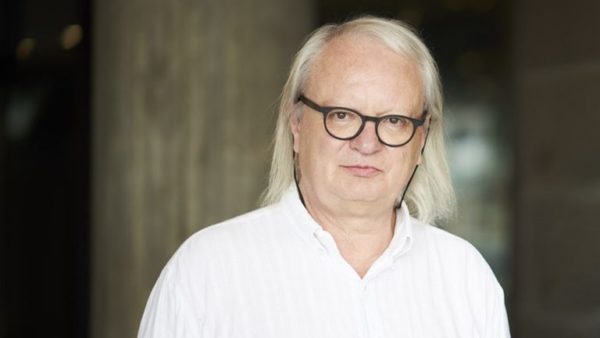
The creation of « Métal » by Philippe Manoury
A portrait of Philippe Manoury © Harmut Nagele
Philippe Manoury’s Métal was created at the Villette in Paris, on November 7th, 1995. You can listen to an excerpt of it here.
1996
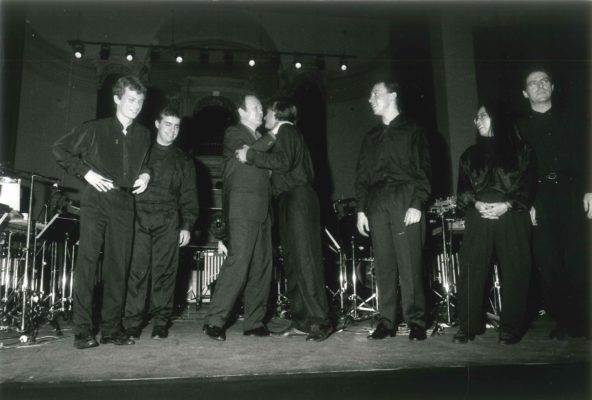
The creation of Philippe Hurel’s « Kits »
« Kits » was created on April 24th, 1996 at the Théâtre de la Criée in Marseille. From left to right: François Papirer, Claude Ferrier, Philippe Hurel kissing Olaf Tzschoppe, Bernard Lesage, Keiko Nakamura and Jean-Paul Bernard. © Archives Percussions de Strasbourg
1997
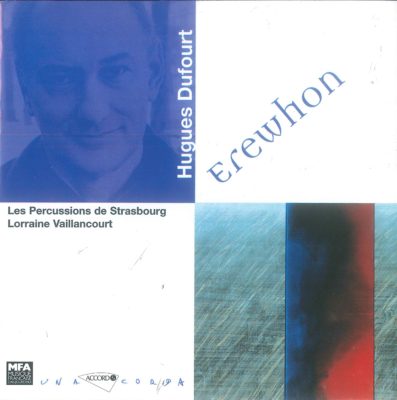
The re-creation of « Erewhon » by Hughes Dufourt
« Erewhon » had been created during the 14th International Contemporary Art Festival in Royan on April 2nd, 1977, at the Théâtre du Casino Municipal. It was directed by Giuseppe Sinopoli.
1998
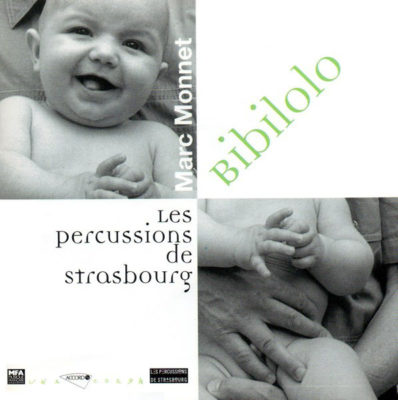
The creation of « Bibilolo » by Marc Monnet
Artwork for « Bibilolo »’s CD, Percussions de Strasbourg (Musidisc France – Universal Music 2001)
Marc Monnet’s Bibilolo was created on January 17th, 1998. The band then made pieces 6 to 14 at the Hippodrome of Douai, on May 5th, 2000.
2000
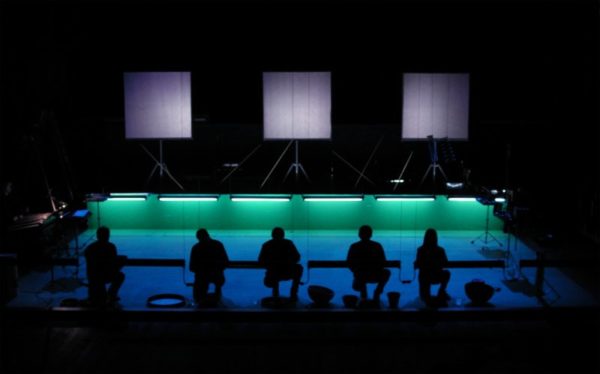
The creation of « Même soir » by Heiner Goebbels
Pictures from the show © Klaus Gründberg
« Même soir » was created by Heiner Goebbels on September 28th, 2000, at the Muncher Kammerspiele in Munich. It is a musical piece of theatre featuring a triptych of three screens onto which a video is projected. It can be described as a scenic concert where musical acts and theatrical scenes blend together. While some moments may be recreational, others are more meditative. It is an audiovisual show with three screens, electronic sounds and lights.
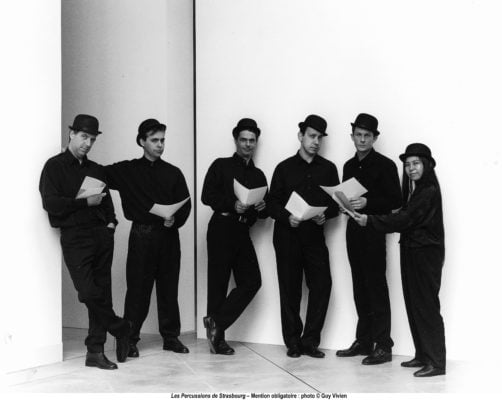
2002
2012
2002
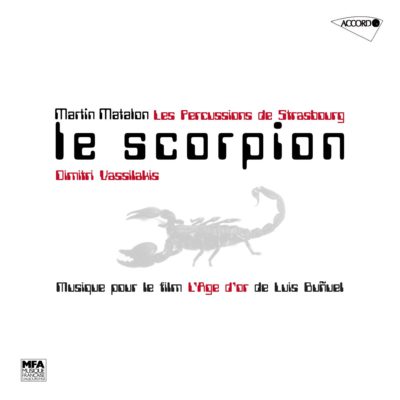
« Le Scorpion » by Martin Matalon
« Le Scorpion », M. Matalon, Percussions de Strasbourg. Musidisc France – Universal Music 2004
Le Scorpion is a musical piece by Martin Matalon (2002). It was intended for a piano, six percussionists and electronic devices. It was composed for the Luis Bunuel film « L ‘âge d’or » (1930, 63 min, story by Luis Bunuel and Salvador Dali) and it was played by Dimitri Vassilakis and the Percussions de Strasbourg.
2002
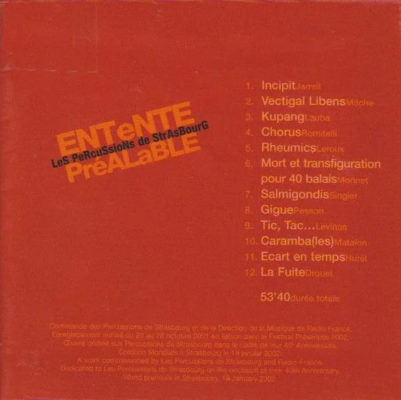
40th anniversary: « Entente préalable »
« Entente préalable » is a collective work that was made for the 40th anniversary of the band, featuring 12 composers. Percussions de Strasbourg (Musidisc France – Universal Music 2000)
2003
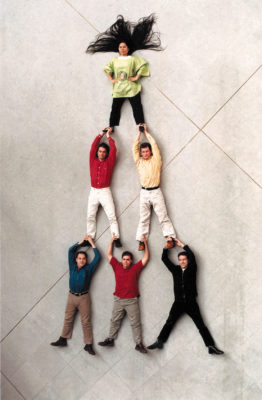
The band continues experimenting with its work of research and creation
In the bottom row: Bernard Lesage, Claude Ferrier, Jean-Paul Bernard. Above them: Olaf Tzschoppe, François Papirer. At the top of the pyramid: Keiko Nakamura. © Guy Vivien
2005
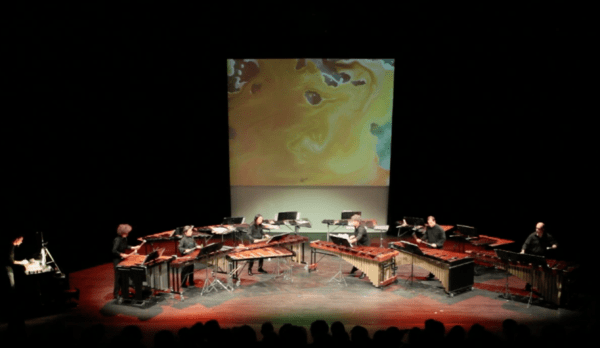
The creation of « Transir » by Michaël Levinas
An excerpt from the concert and the piece « Transir » at the Théâtre de Hautepierre (Strasbourg), on October 29th, 2014.
2006
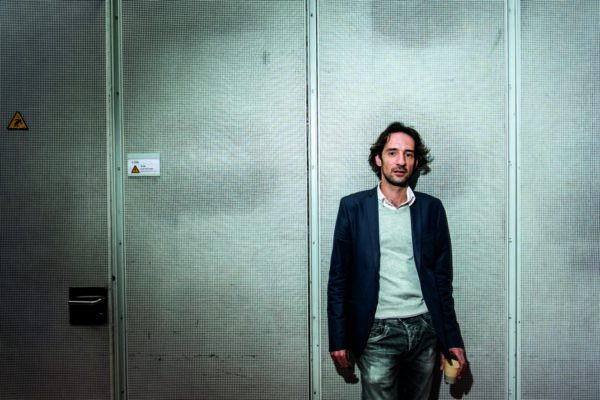
The creation of « Delle Città invisibili » by Sébastien Rivas
A portrait of Sébastien Rivas © Sylvain Gripoix for Le Monde
Della Città invisibili was created by the Percussions de Strasbourg on September 10th, 2006, at the Royaumont Abbey (France).
2007
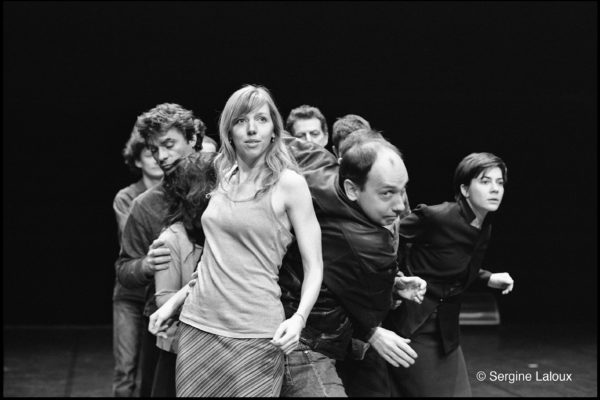
« Les Arpenteurs », François Paris and Michèle Noiret
2007 © Sergine Laloux
Choreographed by Michèle Noiret. The music and conception of the piece were done by Alain Lagarde.
2008
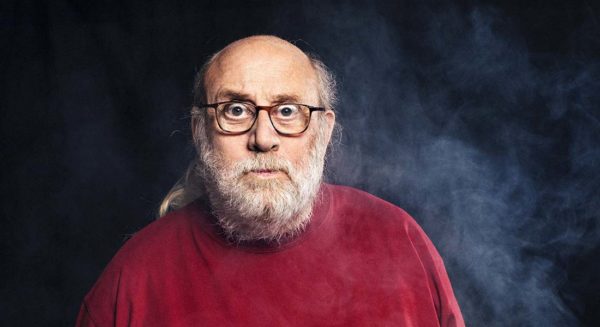
« Fishbones » by Ondrej Adamek and « Childhood journeys » by Andy Emler
A portrait of Andy Emler, who composed « Childhood journeys » © Sylvain Gripoix
You can find an excerpt from Ondrej Adamek’s Fishbones here.
2009
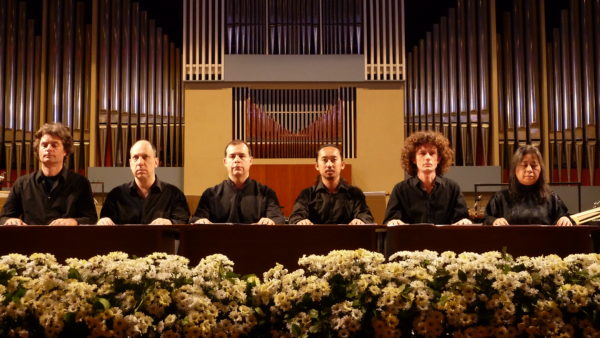
« Il funeralli dell’anarchico Serantini » by Francesco Filidei
Concert in Yaroslav, Russia, April 5th, 2011. From left to right: Olaf Tzschoppe, Bernard Lesage, Claude Ferrier, Minh-Tâm Nguyen, François Papirer and Keiko Nakamura © Archives Percussions de Strasbourg
2010
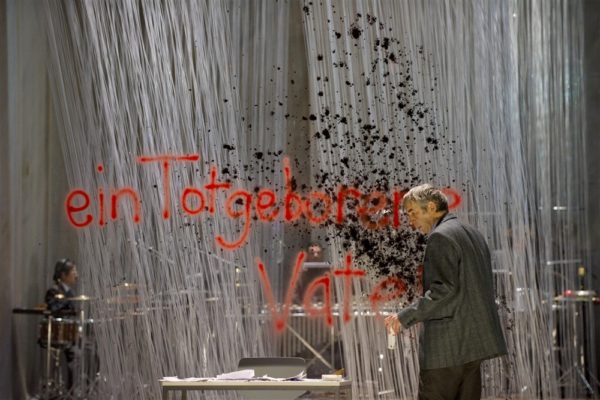
The creation of « Le père » by Michael Jarrel
Pictures ©Monika Rittershaus
Musical piece of theatre, based on Heiner Muller’s work. The show was created on the 3rd, 4th and 5th of June 2010 at the Schweitzingen Festival in Germany. Music by Michael Jarrel and staging by André Wilms.
2011
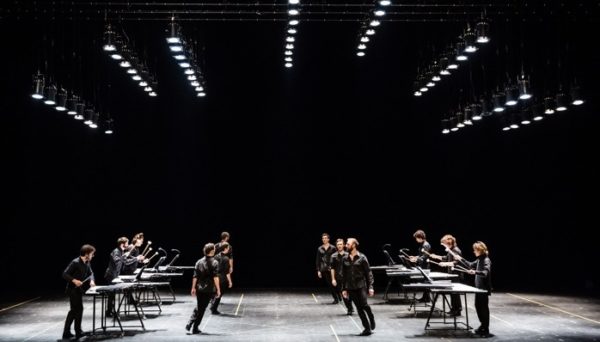
The re-creation of « Pléiades » with Abrupt (dancing company) and 50th Anniversary Tour
Pictures @ Agathe Poupeney
A new version of « Pléiades » was created with Alban Richard and the National Choreographic Centre of Caen, on June 24th, 2011. Conception and choreography: Alban Richard and the Abrupt dance company
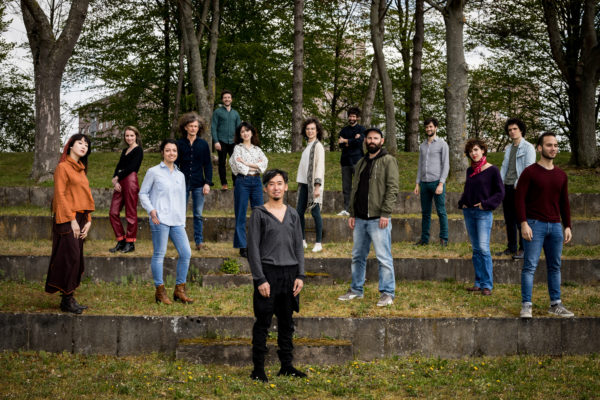
2012
2022
2012
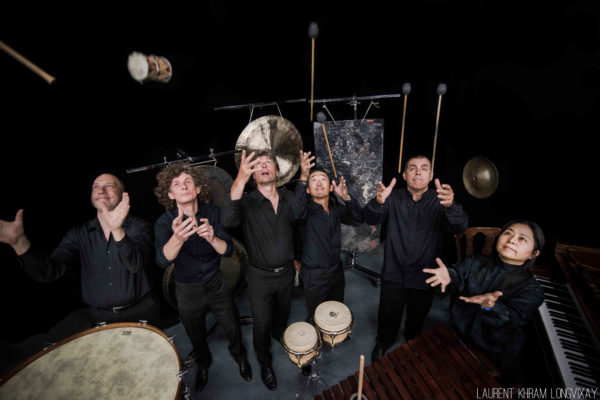
The Percussions de Strasbourg are 50 years old
Picture by ©Laurent Khram. From left to right: Bernard Lesage, François Papirer, Olaf Tzschoppe, Minh-Tâm Nguyen, Claude Ferrier and Keiko Nakamura.
2013

The creation of « Haikus del mar », with José Manuel Lopez Lopez
April 2013, during the creation of « Haikus del mar ». Front: Olaf Tzschoppe, Keiko Nakamura, José Manuel Lopez Lopez, Claude Ferrier. Back: Bernard Lesage, Minh-Tâm Nguyen and François Papirer. © Archives Percussions de Strasbourg
2013 was also the year the piece Terminals by Bobby Prévite was born.
2014
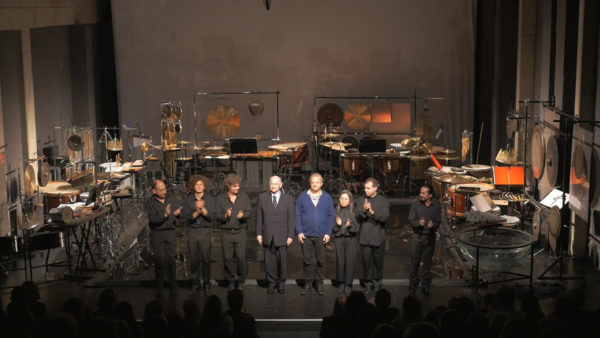
The creation of « Burning Bright » by Hughes Dufourt
Final bow at the Théâtre National du Luxembourg on November 27th, 2014. Bernard Lesage, François Papirer, Olaf Tzschoppe, Hughes Dufourt, Enrico Bagnoli (lights and scenography), Claude Ferrier and Minh-Tâm Nguyen. © Archives Percussions de Strasbourg
2015
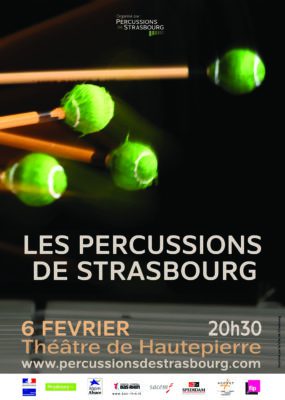
The first Live@Home concerts and Jean Geoffroy’s nomination as Art Coordinator
Illustrations: Posters for the first Live@Home, which are concerts that are organised by the Percussions de Strasbourg at the Théâtre de Hautepierre.
2016

The creation of the Percussions de Strasbourg label and of the piece « Drum Machines », eRikm
Illustration: The Percussions de Strasbourg’s logo
Drum-Machines, eRikm and the Percussions de Strasbourg. Research residency, September 2015, Strasbourg.
2017
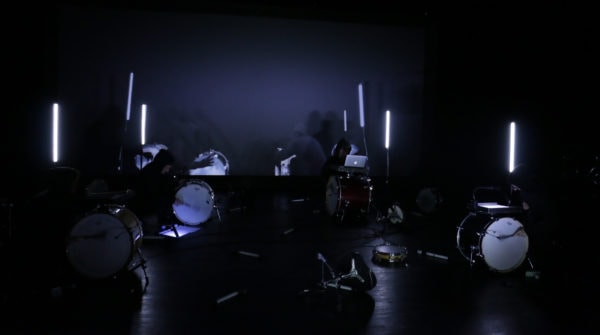
The creation of « Ghostland » by Pierre Jodlowski
Photographs © Matthias Plantard
2018

57 years for the Percussions de Strasbourg
Photograph: Ondée © Claudia Hansen
Two pieces were created in 2018: Karl Naegelen’s Ondée and Toshio Hosokawa’s Regentanz.
Ondée is a show including lights and scenography that evoke shapes of water.
As for Regentanz, it is a piece by Japanese composer Hosokawa and is featured on the album Rains, which also includes Malika Kishin’s Sange (2016), Yoshihisa Taira’s Hiérophonie V (1975) and Toru Takemitsu’s Rain Tree (1981). A teaser of the album is available in the Learn more section.
Video: France 3 Grand Est, « 57 ans de Percussions de Strasbourg », 2018.
2019
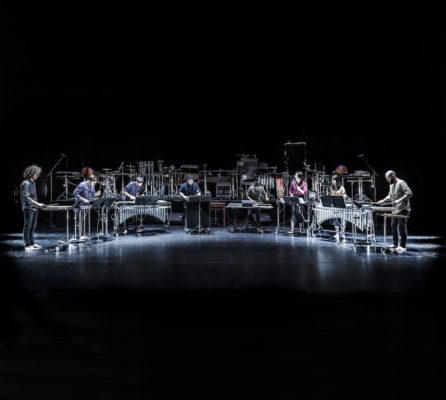
« Timelessness » by Thierry de Mey and « Kore » by Carmine-Emanuele Cella
Timelessness, Photograph by © Christophe Urbain
You can watch a video recording of Timelessness made by Arte Concert by clicking here.
2020
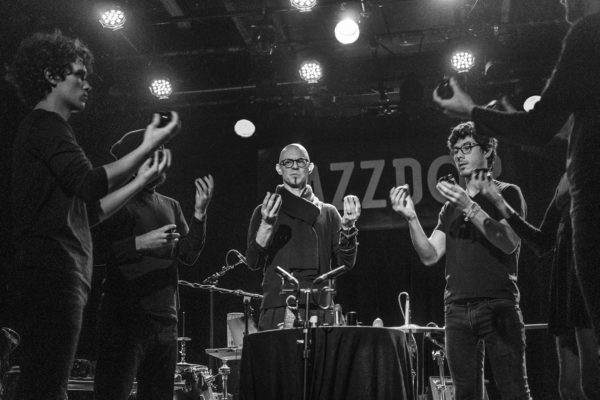
« Shaker Kami » by Nik Bärtsch and « 100 cymbals » by Ryoji Ikeda
© Patrick Lambin, Shaker Kami by Nik Bärtsch, February 14th, 2020 at the Jazzdor Festival, Fossé des Treize, Strasbourg.

